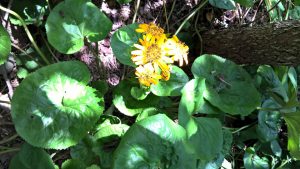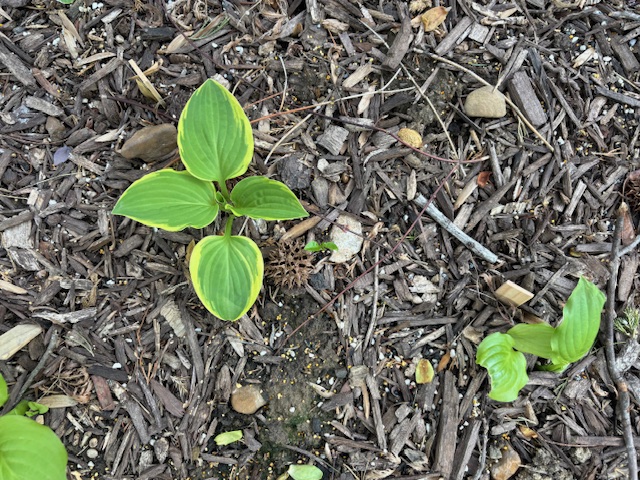As One Gets Older
Views: 4648

As one gets older, one is supposed to grow wiser. I think that really means that we start learning by attending the “School of Hard Knocks” and then graduate from the “University of Bitter Experience”. Still, we never learn to ignore ourselves when we tell ourselves little lies…such as:
I’ll remember what I planted there.
I’ll remember the name of that plant.
Guilty as charged, and I seem to be a slow learner, especially as one gets older. So, when we moved into our new home in late 2008, I virtuously determined to get organized. What I lacked in memory, I would make up with a garden log. Now, it’s not a journal, just a log of what we plant where and when. Lately, I’ve started using emboss-able metal plant tags in the garden too. Just in case our gardens get chosen for a Master Gardener Garden Tour someday….not saying I’m planning on anything like that, you understand!
Mystery plant
So, I noticed this big, tropical looking plant with bright yellow blooms in one of my more shady beds and took a photo of it. I’ll write a blog about this guy, I thought to myself…but what was it? No tag on or by the plant. Nothing in my garden notebook. Rats! I’d done it again!
Trying to get to sleep last night, the name finally came to me – Ligularia! Well, that’s just fine, but what species? Dunno. Ligularia is also known as “ragwort”, “Leopard Plant”, and “Golden Groundsel”. I thought it was native to the eastern U.S., but it’s not…it originates in Europe and Asia…goes to show what I remember!
A Plea for Help
Maybe one of you can tell me what species it is. In the meantime, it’s still worth writing about. First, it’s growing just fine in really deep shade, about 18 to 24 inches tall in the original clay that pretends to be soil around here (Zone 6b). It’s in a low spot, so it gets a lot of run-off and this year, it sat in pretty boggy conditions. The deer don’t seem to be interested in it, and it has really large, sturdy, round leaves, growing from the crown in a loose mound.
In early August, the bright yellow blooms just glowed from the deep shade, lighting up a fairly dreary section of that garden bed (I know, that bed definitely needs work before we’re on the Garden Tour!) After the weather turns cold and frost hits it, it will die back to the ground. I haven’t noticed it being particularly aggressive, just getting a little bigger and showier each year.
Plant Care
You can propagate it by dividing it at the crown in early spring or late fall (make sure to feed!) and I may try to do that since it’s such a neat plant. There are commercially available cultivars, including “Desdemona”, “Othello” and “The Rocket”. The foliage is bold enough to stand on its own, even without the bright yellow blooms.
Now, if you’ll excuse me, I’ve got to go put a label by it before I forget “Ligularia” again!
Meet Dona Bergman
Dona Bergman is a founding member, Southwest Indiana Chapter of the Indiana Native Plant & Wildlife Society, and an Advanced Master Gardener.







